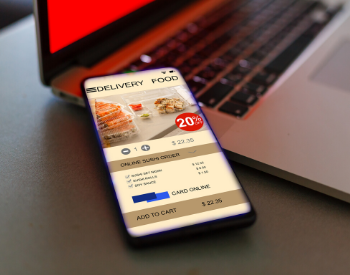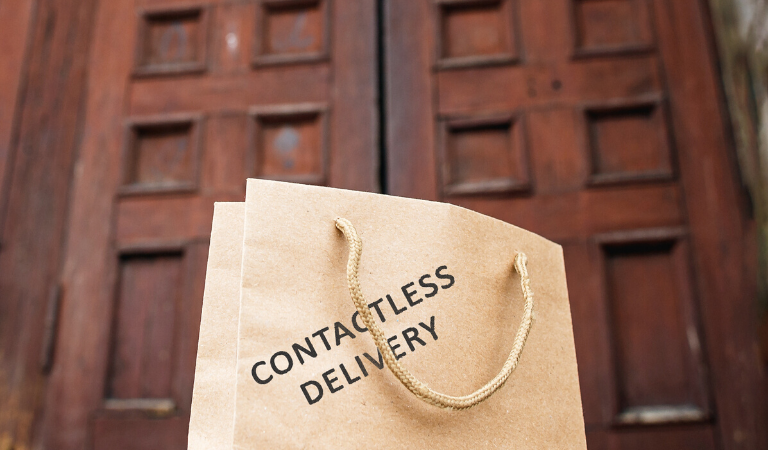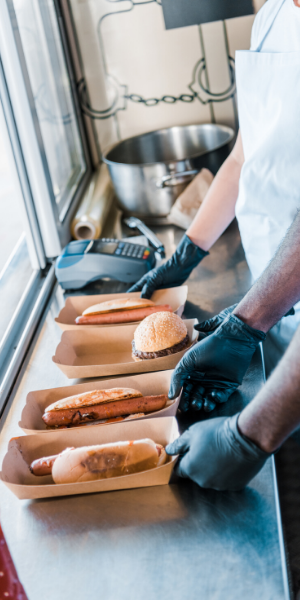As social distancing has become the new normal, many are wondering where that has left food trucks. This has put food trucks in a difficult position because they can no longer rely on events or catering to support their business.
A new challenge for food truck operators has been created: attract customers during stay-at-home orders. Luckily, there are a few ways operators have been able to keep their businesses afloat while adhering to social distancing restrictions. Take a look at our list of ways food trucks are adapting to the effects of the coronavirus pandemic and consider implementing them to keep your food truck rolling.
1. Operate In Residential Areas
While food truck locations have always been designated to serve specific areas, such as commercial zones, certain cities and counties are now allowing service in residential areas. Cities and counties want people living in food deserts to have access to meals without having them travel far from home and risk getting infected by the virus.
Before driving into neighborhoods, make sure your city or county has granted mobile food units permission to operate in residential areas and meet any restrictions set. For instance, some areas are not allowing food vendors to operate on private property and prohibit vendors from setting up dining areas.
Neighborhoods located in food deserts would be the best areas to provide service, as people living in these areas need to travel long distances to reach restaurants or markets. By acting as a food source for these neighborhoods, you will be building a new customer base you can rely on during and after the coronavirus pandemic.
2. Limit Contact With Customers

Food trucks have always counted on gatherings to conduct business, but with social distancing guidelines in place, congregating is no longer allowed and everyone must keep a distance of at least six feet from each other. When servicing customers, practice the following methods to limit customer contact with employees and create the appropriate amount of space between queued customers.
Provide Online Ordering
Through the use of a website or third-party app, customers can order their meals without having to approach your service window and avoid coming into contact with your employees. Customers can also pay online to eliminate the risk of exchanging payment or receipts with employees.
Add Curbside Pickup & Delivery To Your Business Model
Instead of having customers wait in line for their orders, a great food truck idea would be to offer curbside pickup. This keeps customers from getting out of their cars and ensures they maintain a safe distance from other customers and staff members. When it comes to delivery, try implementing a contactless delivery method into your service by having drivers leave packaged meals on customers’ doorstep and sending a text or giving a call to notify customers that their order has arrived.

Use Your PA System To Call Out Orders
If you are unable to provide curbside pickup or delivery services to your customers, have customers wait in their cars and use your PA system to call out orders. This way, each customer can approach your vehicle one by one and keep from coming into contact with one another.
3. Provide Service To Essential Businesses
The only places where small gatherings are allowed to take place are essential businesses. By stationing
your truck near these areas, you are more likely to service customers while they are on their way to
work or during lunch breaks. Read through our list of essential businesses to get a better idea of where
to take your vehicle.
Examples of Essential Businesses:
- Police stations
- Hospitals
- Banks
- Schools
- Car rental companies
- Veterinary clinics
- Daycares
- Pharmacies
- Farmer’s markets
- Post offices
- Truck stops
Remember to have all the required permits for serving at these locations.
4. Offer Family Meal Kits
Family meal kits are extremely appealing for customers that have children at home. They’re great for kids that are picky eaters, they bring families together during meal times, and they can be large enough to provide leftovers for the next day. Adding these to your food truck menu is a great way to appeal to families while they’re staying at home.
Always Remember, Safety First
As you’re serving customers, make sure to regularly sanitize surfaces and equipment. This will keep customers and employees from coming into contact with coronavirus and other bacteria. Require staff to wear gloves and masks, if possible. Take all precautions necessary to minimize the chances of staff and patrons getting sick and keep yourself informed about the latest developments involving this disease.








